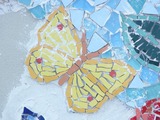
Butterfly adaptations are linked to Greek and Roman mosaics.
- Subject:
- Cross-Curricular
- Measurement and Geometry
- STEM/STEAM
- Visual Art
- Material Type:
- Lesson
- Author:
- Jamie Marquitz
- Amy Erb
- Candice Anthony-Cazenave
- Jessica Brown
- Date Added:
- 12/23/2020

Butterfly adaptations are linked to Greek and Roman mosaics.
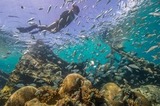
In this activity, you will design a device that will substantially impact our environment. You can write words around your device’s image to help explain your ideas. This device does not have to be realistic. See the example of how to draw a device prototype below. An example of an approach could be to create a sizable water Roomba-like device that cleans the top of a body of water and burns the trash collected. This process turns the trash into oxygen.

Objectives: Students will be able to identify hidden images in visual media. Students will identify themes in images.Students will identify supportive evidence in images.Students will identify if the image is a fact or opinion, persuasive, or informational. Students will be able to identify encoded messages in visual images. Students will be able to identify a creative practice to reflect on hidden meanings in visual images.

Each of the 5 countries have topics, real life applications/consequences, and 3-4 artists from that country that can be used a "mentor artists" to lead the students to create an artistic response and presentation for students, staff, and environmental representatives In terms of the art - What do the colors, lines, shapes, and techniques of the artists make you feel? Why did the artist/author decide to use these techniques and colors? What if they had chosen a different color combination?What colors make you feel the same way? What techniques will you use to express the same feeling?

Teach about the Fibonacci sequence being a series of numbers and which is found reflected in nature. Students create artwork based on the sequence.
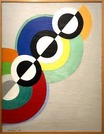
Using 3rd grade objectives, listed above, the student will be assessed on at the end of the project. The student will - -used 5 or more different fractions with different denominators (1/1, ½, ⅔. 3/4, 4/6,⅛) - used a different tool/material/idea for each “mini project”- wrote a short explanation for each work of art. (1/1 is a picture of my dog) - am prepared to share my work in class with my peers. Bonus - Extended my thinking creating Fraction Art with a mixed number - 1 1/3

1. Have the students bring a Math graphing problem that they have been working on in class. **This will take some coordination with their homeroom teacher in order to work! or present a simple graphing problem for them to solve. It needs to have 3-4 variables. This is so that they can use 3-4 coordinating colors of yarn for their design.In this lesson, we will translate the bar graph chart into a horizontal graph design. Use the numbers to represent rows of weaving. For example, if a 5 is represented in the information then color in a section of rows on the graph paper to represent 5 rows that will be woven in that color. Tell the students to use the same colors that they have on their math bar graph, when creating their graph for weaving so that there is less confusion.

Today, you want to discuss how artists can help bring awareness of environmental changes through art. Introduce a few artists that use environmental change as their theme. It is a good idea to have several artists that use different kinds of mediums. Examples: Nils-Udo, Andy Goldsworthy, Richard Shilling, Agnes Denes, Chris Jordan, Benjamin Von Wong, Olafur Eliasson, Amanda Schachter, Rachel Sussman, and Mathilde Roussel. These are some environmental artists of different backgrounds and diversity that work in different medians. Discuss how posters have been used to educate others on environmental changes. Show your teacher’s example of an educational and artistic environmental poster. Talk about your poster and the environmental concept that you chose as an example of not only the artwork but on a presentation as well.

1. Matter and Pointillism Lesson2. Painted example3. TEI Matter

1. Moon Phases Lesson Plan2. TEI Moon Phases3. Moon Phase Sample

Demonstrate how to draw a landscape outline using foreground, middle ground and background. Tell the students that they will need to choose two different VA landscapes to draw including details and color.Draw an outline in pencil of the first regional landscape of your choice.Discuss colored pencil techniques. When coloring in your drawings, use several different colors and shades of a color as well as how to vary the pressure on your pencil to add depth to your drawing. Have students pass out supplies.Students write what two regions of their choice on the back of their first landscape drawing. Students work independently on their first landscape.
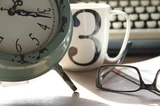
This lesson was designed by CPS Art teachers for Elementart and Middle School Art teachers. We made sure to have space for art and cross-curricular objectives, vocabulary, modifications, as well as extensions.

This lesson connects the invention of the x-ray by Tesla to the artwork of Austrailian Aboriginals.
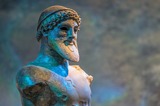
In this unit, students will delve deeper into the genre of myth to access appropriate standards. The students will use Greek Mythology as a vehicle to master and apply fiction comprehension skills. Students will also explore the background of Greek philosophers while applying and mastering nonfiction comprehension skills. The students will show mastery by completing a Persuasive Writing Performance Based Assessment.

In this unit, students will delve deeper into nonfiction with a novel study titled, I Am Malala. The students will apply nonfiction comprehension skills and close reading strategies to analyze and explore the challenges of an adolescent girl from a different culture analyze while reading. The students will show mastery by completing a Persuasive Writing Performance Based Assessment.

In this unit, students will examine the global topic of refugees. The students will use nonfiction articles that provide students a background knowledge of the topic. The articles will be the resources used to support learning of nonfiction VDOE Grade 8 standards. Students will apply comprehension skills daily throughout the unit of study. The acquired background knowledge will support the second half of the unit as students will take part in a novel study using Refugee. The students will show mastery by completing a persuasive writing performance based assessment.

In this unit, students will delve into a novel study for Refugee. The students will use the novel as a vessel to practice and apply comprehension skills. Students will also explore the challenges of three adolescents who are all faced with the difficult decisions of having to leave their homes. The students will show mastery by completing a Persuasive Writing Performance Based Assessment.

This unit will focus on the not-so-distant future of the students - employment. Students will analyze the process to identify necessary character traits of a strong employee by reading nonfiction and making connections between their lives and the reading by exploring potential careers. The unit will culminate with a persuasive essay about the qualities of a good employee.
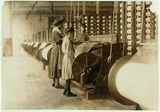
In this unit, students read the novel, Lyddie, by Katherin Patterson. Students will read a variety of fiction and nonfiction through the novel to make connections between characters and settings. Additionally, students will engage in character analysis to help them understand author's conventions. Finally, students will engage in vocabulary study to help them understand the connotations and denotations of words as well as enhance reading comprehension.
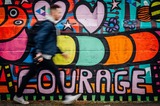
In this unit, students read fiction, nonfiction, and poetry selections about acts of courage, big and small, ordinary and extraordinary. Throughout the unit students will assume the role of a blogger and write expository essay profiles about the people and characters they read about and their acts of courage. This work will be curated in a Google Site that will serve as the Performance Based Assessment.